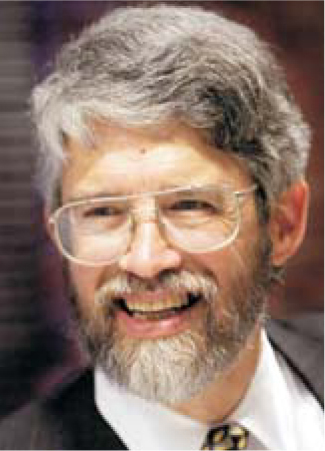Holdren appointment confirms Obama’s climate change focus
DOI: 10.1063/1.3086093
President Barack Obama chose a physicist who has specialized in science policy to become his science adviser and director of the White House Office of Science and Technology Policy (OSTP). John Holdren, who has run the science, technology, and public policy program at Harvard University’s Belfer Center since 1996, also worked as a theoretical plasma physicist at Lawrence Livermore National Laboratory.
Announcing Holdren’s nomination on 20 December during his weekly radio address, Obama fulfilled a campaign pledge to have his science adviser selected by inauguration. Although the science adviser position does not officially require Senate confirmation, the OSTP appointment does, and past nominees have held off science advising until after confirmation to avoid potential objections from senators. Pending his confirmation, Holdren declined through a spokesperson to be interviewed.
Holdren is no stranger to advising the White House. He was a member of the President’s Council of Advisors on Science and Technology from 1994 through 2001 and chaired two PCAST subcommittees that addressed energy research. A 1995 PCAST subcommittee review identified fusion energy as an attractive clean energy option and potentially cheaper than photovoltaics. A 1997 report from PCAST called for additional federal R&D funding for a panoply of energy sources, including fission, fusion, and fossil and renewable fuels, and advocated increased spending devoted to reducing the amount of energy used in buildings, in transportation, and in industry.
Holdren has also been active in the arms control and nuclear nonproliferation policy arenas. He led a PCAST study that addressed US–Russian cooperation to protect nuclear materials from theft. For 10 years he headed up the National Academy of Sciences’ Committee on International Security and Arms Control. During that time CISAC produced reports that addressed the disposition of surplus plutonium, future US nuclear weapons policy, and the means for verifying reductions in the world’s nuclear weapons arsenals.
Passionate on climate
Holdren would have been considered a leading candidate for the science adviser post had Vice President Al Gore prevailed in the 2000 election. Like Gore, Holdren is, in Obama’s words, “one of the most passionate and consistent voices of our time about the growing threat of climate change.” He has particular expertise in fusion energy and its environmental impacts, issues he researched while at Lawrence Livermore National Laboratory.
“John Holdren is eminently qualified” for the post, said John Marburger, President Bush’s science adviser and OSTP director for nearly eight years. “His background as a physicist is typical of former science advisers, and his long history of scholarship in energy and environmental policy fits well with President-elect Obama’s priorities.” Marburger said he has deduced from Holdren’s speeches and writings that “he will fit well in the forthcoming administration.”
“John Holdren is a terrific pick,” said Senator Jeff Bingaman (D-NM), chairman of the Committee on Energy and Natural Resources. Many provisions of the 2005 and 2007 energy acts originated in the Holdren-led PCAST studies, Bingaman noted in a statement. Reaction from academics, with whom Holdren has spent most of his career, was also adulatory. “He has the experience, skills, and broad knowledge of science and technology to help fulfill the president-elect’s commitment to science, research, and innovation,” said Robert Berdahl, president of the Association of American Universities. Berdahl further praised Obama’s decision to restore to the science adviser post the “assistant to the president” title and cabinet-level status.
Holdren’s selection brings to three the number of top appointees who will help Obama formulate and implement policies to address the interrelated issues of energy and climate change. The president has appointed Carol Browner, former administrator of the Environmental Protection Agency, to the newly created position of assistant to the president for energy and climate change, and Steven Chu, the Lawrence Berkeley National Laboratory chief, to head the Department of Energy (see Physics Today, January 2009, page 22

Holdren
TOM FITZGIBBONS

More about the Authors
David Kramer. dkramer@aip.org
